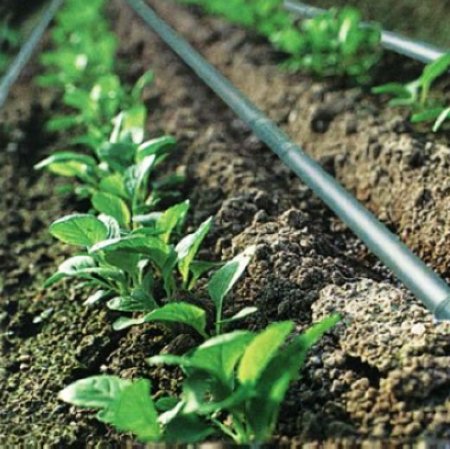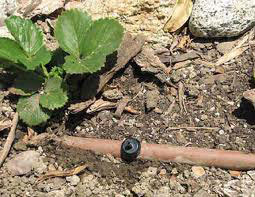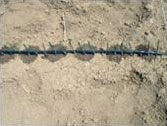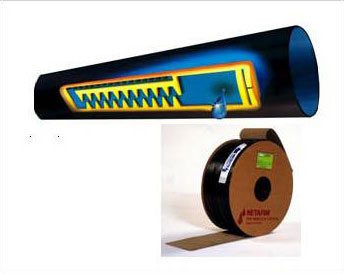Drip irrigation is the standard
Overview
Drip irrigation has become the standard for efficient and cost-effective,low-volume, irrigation for four decades.
 Drip irrigation has several characteristics and benefits that need to be considered when weighing irrigation options for all agricultural crops including row, tree, and forage crops:
Drip irrigation has several characteristics and benefits that need to be considered when weighing irrigation options for all agricultural crops including row, tree, and forage crops:
- Drip is low-pressure: it only requires 0.5 bar (7 PSI) to operate and can therefore work well for smallholder farmers who can only generate pressure from a raised platform tank.
- Drip is low-volume:
- Drip emitters range in flow but all drip is considered "low-volume" such that large areas of land can be irrigated in fewer sets than by sprinklers.
- Low volume also means that water is slowly delivered directly to the root zone and the plant makes more effective use of the water
- The two key variables to maximize the efficiency and effectiveness of irrigation systems are: to apply the correct amount of water and nutrients; and to apply the water precisely at the right time. Drip irrigation is the best irrigation option to achieve these objectives.
 Drip is appropriate for all scales: It serves not only smallholders but medium-sized farm plots and large plots and can be customized for irregular shaped fields.
Drip is appropriate for all scales: It serves not only smallholders but medium-sized farm plots and large plots and can be customized for irregular shaped fields.- Drip systems can be thought of as the capillary or circulatory systems of irrigation. This means that all liquid chemicals, fertilizers and other nutrients can be injected into the drip system so that the plants benefit from syringe-type applications of these nutrients
- Drip systems can also be buried. Sub-surface drip irrigation (SDI) has many advantages:
- SDI maximizes transpiration of the plant thereby optimizing plant biomass, and reduces evaporation thereby optimizing the water delivered through the irrigation system
- SDI allows for working the land at any time without regard for potentially damaging the irrigation system
- SDI is cost effective due to fewer repairs and does not require re-installation
 SDI is appropriate for all crops including forage crops. For forage crops a huge benefit is that it often allows for an extra cutting because the grower need not wait for the field to completely dry out as he/she would in a sprinkler system.
SDI is appropriate for all crops including forage crops. For forage crops a huge benefit is that it often allows for an extra cutting because the grower need not wait for the field to completely dry out as he/she would in a sprinkler system.
Features
These are some of the benefits of using drip irrigation. It is important to point out two other characteristics of drip irrigation:
Drip irrigation consists of three components:
 1Tubing
1Tubing
2Emitters
3Connectors
Climate-smart irrigation (CSI) stipulates that these three components for drip must be included in all systems. While it may be obvious that these three components are required, the reality is, that in many countries of Africa and sub-Asia, what is supplied to the farming community are drip systems that consist only of tubing and connectors. The drip emitter, which is at the heart of the system, has been removed.
In the world of professional agricultural systems the presence of the drip emitter, which can either be extruded within the drip line during production, or added later as a "push-on" emitter, is absolute.
There are many methods for controlling the flow of a drip emitter. Each method has the same objective which is to reach a degree of uniformity at the point of all emitters in the system. This is the critical metric for an efficient irrigation system.
Each outlet of an irrigation system must emit the same flow per unit of time.

There are many different flow-rates, different wall-thicknesses of dripperline, different diameters of dripperlines, and different brands from which to choose. All professional-grade drip products that full-service, professional distributors sell and support are high-quality, reliable and field-tested products. All drip products that are supplied to the growers of LDCs that would not be supported and sold to the professional irrigation industry do not qualify in the model of CSI.
CSI works with the professional agricultural industry and can assist growers in the selection of the proper drip system, design, installation, maintenance and guide growers in troubleshooting for all crops.

